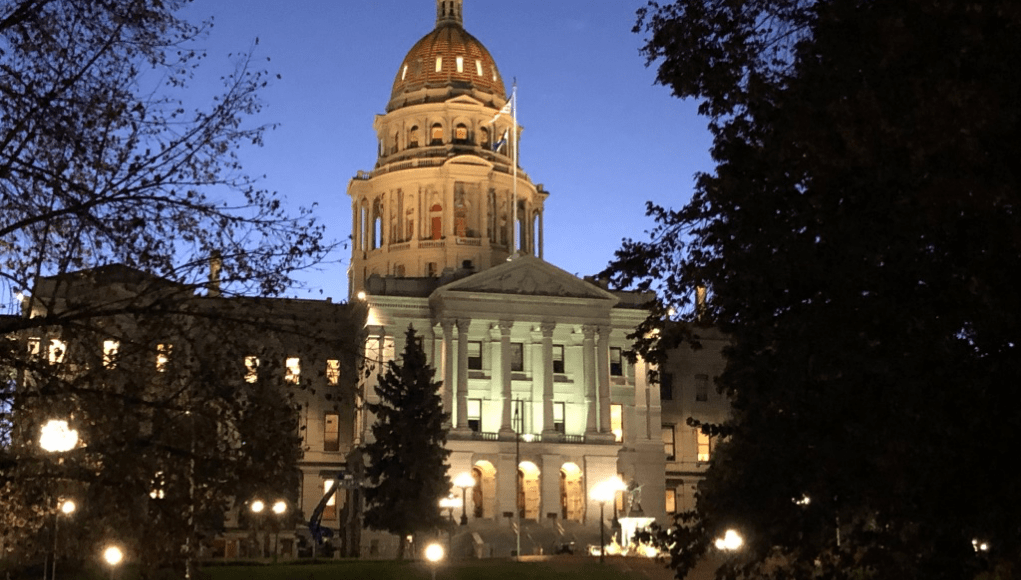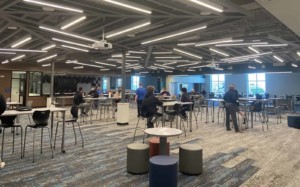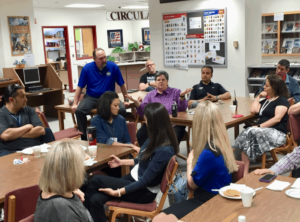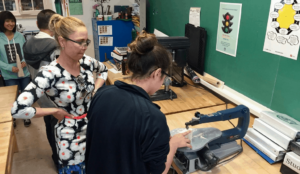How States Can Jumpstart the Future of Learning

The #FutureofWork is here—exponential technology has reshaped the employment landscape—but the #FutureofLearning seems to be taking its time. Most secondary students are still sitting in rows, filling out worksheets, and moving to the next disassociated subject when the bell rings.
How can state policymakers jumpstart learning that makes kids future-ready? Earlier this month, the National Governors Association convened in Chicago to discuss that question in a conference titled “Future Workforce Now: State Policy Forum for Action.”
The Aurora Institute, leading advocates for high-quality learning for all, encouraged governors and policymakers to create zones for innovative schools and sponsor competency-based pilot programs that ensure all youth have educational opportunities and master the knowledge and skills they will need for future success.
Building on the Aurora Institute recommendation, my advice to state policymakers is summarized in five recommendations.
1. Encourage market-valued outcomes. Like the Profile of a Virginia Graduate, describing what graduates can do will help build support for innovation and align efforts from PreK-12 through adult learning. South Carolina and Vermont have similar profiles.
Another regional example of promoting valuable outcomes is the Real World Learning initiative sponsored by the Kauffman Foundation and shared by high schools in six counties in the Kansas City metro area. Key ‘market value assets’ include internships, client projects, college credit, entrepreneurial experiences, and industry-recognized credentials.
Similarly, a state could create incentives for outcomes valued by the market. For example, Illinois Global Scholar is a recognition for students that complete a course of study, service-learning and a capstone project.
2. Sponsor new school development. Use public-private partnerships to develop new learning models in target geographies and pathways (Aurora Institute policy recommendation #1). The new opportunity is schools that combine personalized and project-based learning with progress based on demonstrated mastery (Aurora Institute policy recommendations #2-4).
New schools (including academies and microschools in existing facilities) address current invention gaps on 1) how to organize school around learning rather than time, 2) how to facilitate more community-connected projects, and 3) how to capture and communicate capabilities better than traditional transcripts.
The best state example of support for new school development is The Texas High School Project, a public-private partnership launched in 2004 (now EdTX), which resulted in 135 STEM and Early College High Schools. Today, there are more than 200 Early College High Schools and 60 P-tech schools, which add internships and employment opportunities.
Ohio’s Straight A Fund also resulted in a number of new STEM schools and robotics training centers across the state.
3. Curtail standardized testing. States can take advantage of all the formative assessment good schools collect to reduce and eventually eliminate end-of-year standardized testing. In addition to encouraging innovative assessment pilots (Aurora Institute policy recommendation #5), states can:
- Verify: Conduct a verification that would enable petitioning districts and networks to demonstrate that they track student proficiency and growth accurately and consistently using a variety of formative assessment tools and practices.
- Waive: Provide verified districts and networks a partial three-year testing exemption (with U.S. Department of Education approval). After an initial exemption period, states could sample student profiles to periodically check the accuracy of district/network systems.
- Support Networks: Encourage a second and third cohort of networks and districts to petition for reduced testing or join a previously authorized group. By encouraging networks of schools and districts to use common assessments, the state may only have to offer dozens of waivers rather than hundreds. (See a proposal for Diploma Networks.)
- Advocate: Begin working with other states to advocate for an update to federal legislation to allow states to exit annual testing requirements and move to this authorized assessment system.
4. Support guidance systems. There are more secondary and postsecondary learning options and career pathways than ever. Young people need personalized and localized career and postsecondary guidance. Public-private partnerships can strengthen advisory systems in high schools using programs like AVID and provide access to online guidance systems (see our evaluation of a statewide initiative supported by College Spark Washington.)
5. Youth and family supports. This new innovation economy is yielding unprecedented social and economic turbulence. Local and state governments should create public-private partnerships to strengthen youth and family services.
“The first step is creating space for innovation, including K-12 education, higher education, career and technical education, and workforce training and credentialing,” concluded the Aurora Institute.
State leaders have the opportunity to build partnerships that support new schools and pathways that lead to fulfilling high wage employment.
For more, see:
- Scaling Competency-Based Education: Equity-Focused Strategies for Policy and Practice
- Education, State Policy and the Future of Work
- Why I’m Post Policy and Pro-Innovation
Stay in-the-know with innovations in learning by signing up for the weekly Smart Update.
This post was originally published on Forbes.







0 Comments
Leave a Comment
Your email address will not be published. All fields are required.